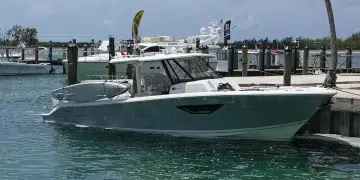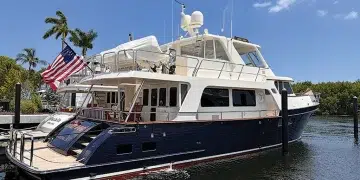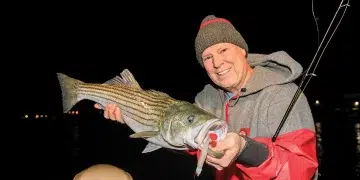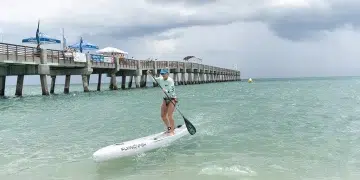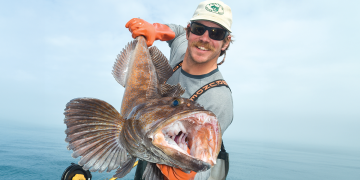The U.S. Coast Guard is Always Ready and Fearless

Semper Paratus
The U.S. Coast Guard, our maritime guardian, is always ready.
With its beginnings going all the way back to the Tariff Act of 1790 and the U.S. Revenue Cutter Service, a maritime division whose purpose was to collect tariffs, enforce trade laws, and prevent smuggling, the U.S. Coast Guard (USCG) has continuously evolved as additional duties were assigned.
In keeping with the theme of celebrating American independence and values, let’s highlight some of the USCG’s history. The Cutter Service merged with the U.S. Life-Saving Service in 1915 and was renamed the Coast Guard. In 1939, the USCG was put in charge of the Lighthouse Service and, thus, maritime navigation. The USCG then took control of marine licensing and merchant vessel safety in 1946. The branch was transferred to the Department of Transportation in 1967 and then moved into the Department of Homeland Security in 2003, where it still resides. “Homeland Security Missions” were added to its existing duties, and Maritime Safety and Security Teams (MSST) were developed to protect the nation’s ports, waterways, and coastal areas from terrorist attacks. There are 11 MSSTs stationed at coastal locations around the country, but can deploy anywhere necessary.
A Show of Force
To better carry out the national security missions, the Coast Guard upgraded its fleet of ships. Eight National Security Cutters (NSCs), also known as Legend-class cutters, replaced the 12 Hamilton-class high-endurance cutters. The 418-foot NSC is capable of speeds up to 28 knots, has a range of 12,000 miles, and can carry a crew of 122.
Commander Anne O’Connell, commanding officer of the USCG Cutter (CGC) Campbell, noted that “use of force packages” on major cutters were also developed which now include using onboard helicopters. The first NSC, Bertholf, was commissioned August 4, 2008, and completed its first extended operations in 2009.
In times of war, or at the direction of the President, the Coast Guard serves under the Department of the Navy. After the 9/11 attacks, the USCG deployed more than 1,000 men and women as well as two cutters and eight patrol boats to the war zones in Afghanistan and Iraq. This was the largest Coast Guard commitment overseas since the Vietnam War. They carried out a variety of missions that included port security, law enforcement, training, and navigation improvements.
Over the past 50 years, the USCG’s responsibilities have greatly increased from maritime safety and first responder to law enforcement, a regulatory agency, and a member of the intelligence community. The breadth of Coast Guard duties is truly amazing.

Duty Roster
In 1822, the Revenue Cutter Service was given the responsibility of protecting living marine resources both in the water and the air. With the emergence of fossil fuels, oil spills were added to the list of environmental duties. On March 24, 1989, the oil tanker Exxon Valdez hit a reef in the Prince William Sound, Alaska. An estimated 15 million gallons of crude oil poured into the Sound. It only took 30 minutes before a Coast Guard inspector arrived at the spill site and implemented the spill contingency plan. At the height of the response effort, nearly 2,000 men and women participated in the cleanup. A fleet of 450 vessels of all kinds and more than 40 aircraft supported the abatement process.
Then, on April 20, 2010, an even greater oil spill disaster occurred when the Deepwater Horizon drilling rig, located 42 miles off the Louisiana coast in the Gulf of Mexico, suffered an explosion. Eleven crew members were killed. The well head, some 5,000 feet below the surface, started spewing oil. Before it was finally capped, 87 days later, an estimated 134 million gallons (3.19 million barrels) of oil had poured into Gulf waters, the worst oil spill in U.S. history. The Coast Guard led the search and rescue immediately after the explosion, but the 11 missing workers were never found. The Coast Guard, as the federal representative, then began coordinating the spill containment response. At its peak, the Coast Guard directed more than 6,000 vessels, 120 aircraft, and 48,000 people. The main goal was to minimize the effects of the spill on the coastlines from Texas to Florida.
Coast Guard Search and Rescue
The Coast Guard is probably best known for its search and rescue (SAR) missions. An event that changed the USCG’s rescue service occurred early in the morning of February 12, 1983. The 605-foot cargo ship Marine Electric was in trouble off the Virginia coast. When a Coast Guard helicopter arrived at the scene, the Marine Electric had capsized with most of the crew in the cold water. With no rescue swimmers serving in the Coast Guard, the helicopter crew was relegated to just lowering their rescue basket to three survivors. When it was all over, 31 men had perished. This incident was the catalyst for starting the U.S. Coast Guard Rescue Swimmer Program in 1984. In March 1985, Air Station Elizabeth City became the first unit to receive rescue swimmers. The first life was saved two months later.
The USCG also responds to coastal disasters such as hurricanes. When Hurricane Katrina struck the Gulf coast in August 2005, and produced the devastating flooding in New Orleans and elsewhere, the Coast Guard was quick to respond. The USCG utilized 25 cutters, smaller boats, helicopters, and fixed-wing aircraft to rescue more than 30,000 people in all. For its great work in the area, then-President Bush awarded the USCG the Presidential Unit Citation. In August 2017, Hurricane Harvey produced catastrophic flooding in the Houston area. There, the Coast Guard rescued 11,000 people.
An unprecedented rescue effort occurred following the 9/11 attacks on the World Trade Center Towers. According to Dr. William H. Thiesen, USCG Atlantic-area historian, the most important event in the past 50 years “would be the 9/11 attacks.” People tried to leave the stricken area, but bridges and tunnels throughout the city were closed. The Coast Guard came to the rescue, coordinating a massive rescue by water utilizing their own vessels as well as merchant ships, tugboats, ferries, and private boats to transport an estimated 500,000 people off Manhattan Island. USCG Commandant James Loy had Master Chief Vince Patton send a cleanup detail over to Trinity Church near the attack site, which, ironically, is the resting place of USCG founder Alexander Hamilton.
Subscribe Here For Regular Content To Your Inbox
Multi-mission Task Force
In 1965, the Navy relinquished its icebreaking duties and, you guessed it, turned them over to the Coast Guard.
The USCG has two polar icebreakers, the 399-foot heavy Polar Star, and the 420-foot medium icebreaker Healy, the Coast Guard’s largest ship, which is out of commission due to a fire. These ships are also equipped to do polar research. Last year, the USCG conducted 4,500 hours of icebreaking as well as tracking 169 potentially dangerous icebergs that had drifted into Atlantic shipping lanes. A new vessel is currently in build.

Drug smuggling increased greatly over the past 50 years, and in 1973, the first “Coast Guard-controlled drug seizure” of the modern era took place when one ton of marijuana was found aboard a sportfishing vessel. The Helicopter Interdiction Tactical Squadron was formed to stop high-speed drug trafficking boats. In 2020, the USCG confiscated more than 159 tons of cocaine.
With political upheaval, natural disasters, and great poverty in parts of the Caribbean region over recent decades, thousands of people have fled their homeland to try to get to refuge in the U.S. Most of them have traveled by boat, oftentimes putting themselves in precarious situations. The Coast Guard has responded in life-saving operations as well as part of immigration control.
Continued Evolution
Today, a force of more than 50,000 personnel utilizes 259 official cutters (vessels 65 feet in length or greater with crew accommodations), more than 1,600 other vessels, and 200 fixed-wing and rotary-wing aircraft to complete its multitude of missions.
In the future, O’Connell sees the Coast Guard’s duties evolving and increasing both at home and overseas. At home, with more than 90 percent of international trade leaving the U.S. via ship, she envisions even more traffic flowing through the marine transportation system and the USCG working with the marine industry to improve cyber security. She believes there will be more cooperation between the Coast Guard and foreign countries in terms of protecting environmental resources. Climate change means more storms with onshore rescue missions, and as the Arctic regions emerge from the ice, there will be additional shipping and mineral extraction opportunities to deal with. If the past is an indication of the future, the U.S. Coast Guard will certainly always be ready for any task sent its way.
— by Ed Brotak
Related Posts
The post The U.S. Coast Guard is Always Ready and Fearless appeared first on Southern Boating.

